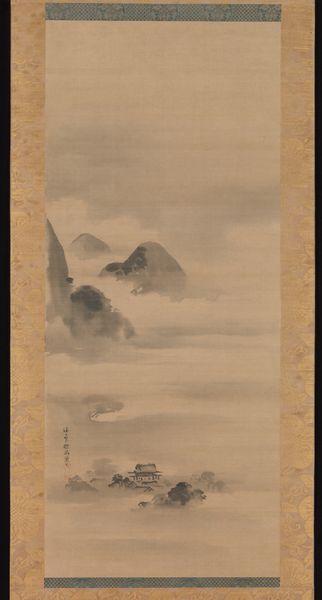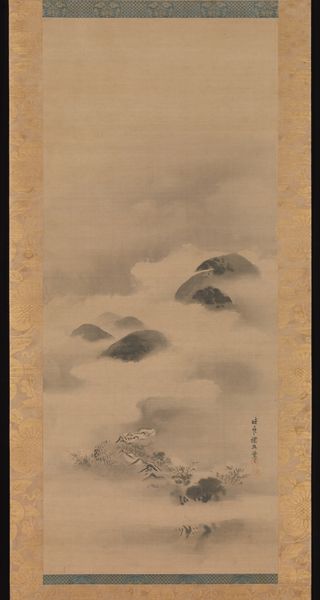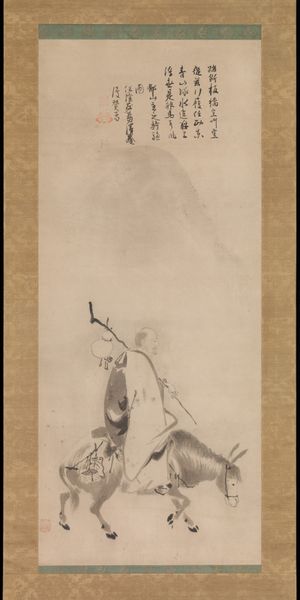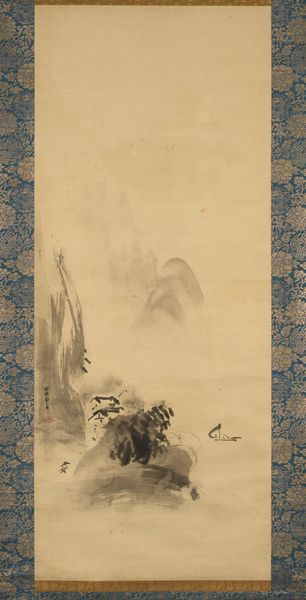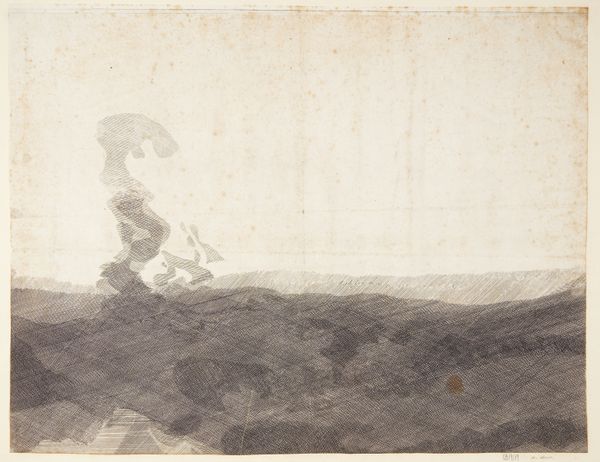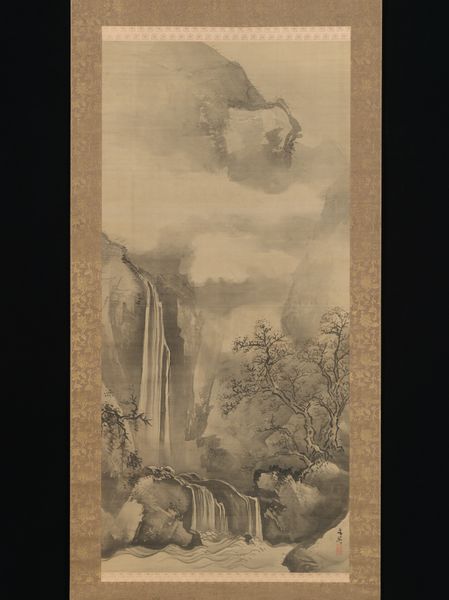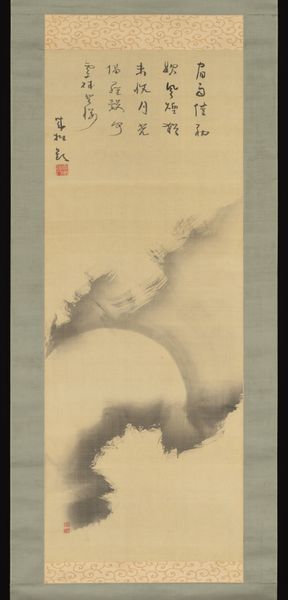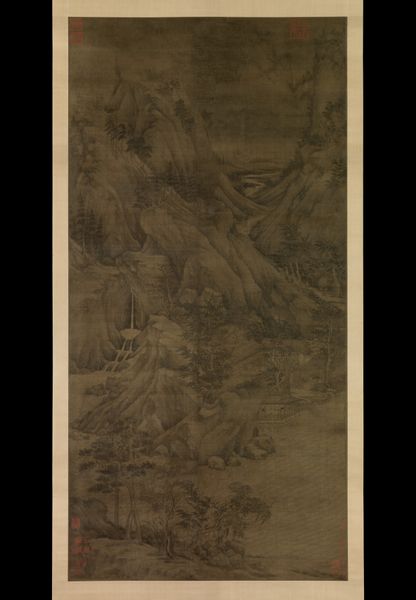
drawing, paper, ink
#
drawing
#
asian-art
#
landscape
#
ukiyo-e
#
paper
#
ink
#
calligraphy
#
monochrome
Dimensions: Image: 39 5/8 x 16 3/4 in. (100.6 x 42.5 cm) Overall: 75 1/4 x 23 1/2 in. (191.1 x 59.7 cm)
Copyright: Public Domain
Curator: Here we have Kano Tan'yū’s "Landscape in Moonlight," an ink drawing on paper created sometime between 1663 and 1674. What's your first take on it? Editor: I’m struck by its quiet drama. The monochrome palette lends it a dreamlike quality, almost a memory. It feels vast, yet intimate. Curator: The vastness definitely speaks to the conventions of landscape painting in the Kano school. But the intimacy is important, too. Consider the historical context: the rise of the merchant class during the Edo period and the shift in patronage for the arts. How might that affect Tan'yū’s interpretation of traditional themes? Editor: The moon, of course, appears frequently in art history across various cultures, often representing feminine power, the subconscious, hidden emotions, or cyclical changes, what cultural values are symbolized here, and in East Asian art generally? Curator: Well, we have to consider the integration of Chinese philosophical and aesthetic values. The moon in East Asian art can symbolize enlightenment, purity, and the transient nature of existence – ideas deeply entwined with Buddhist and Daoist thought. Then look at the composition. Editor: The artist used a stark contrast in the application of monochrome ink. Curator: Yes. With such minimalist means. Think of how Tan'yū manages to capture atmospheric perspective solely through gradations of ink, creating depth and distance with such limited tonal range. What does the rendering tell us? Is it a statement about artistic practice and society, about those limits or pushing against them? Editor: Maybe. To me, the small boat sailing toward the open water hints at human resilience in the face of nature’s grandeur. Its small scale emphasizes humanity's relative position to a landscape in Moonlight. There's also the psychological aspect. The emptiness could symbolize loneliness or self-reflection. The emotional content of that symbolism remains universal. Curator: Absolutely. And it is precisely in these nuances of ink, in these subtly placed elements, that we see Tan'yū engage with both established traditions and emergent societal shifts, creating an image that's both aesthetically beautiful and culturally relevant, a statement that is very true today as well. Editor: Agreed. The image prompts an interior journey. Curator: An appropriate and insightful observation about a culturally resonant work!
Comments
No comments
Be the first to comment and join the conversation on the ultimate creative platform.

